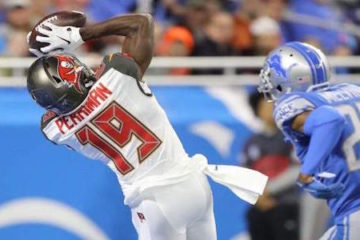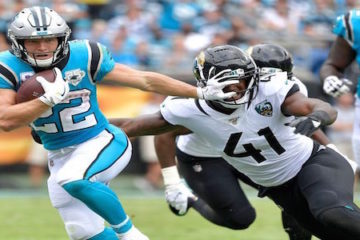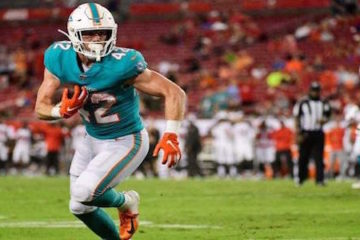2011 Fantasy Baseball, THE RUBBER Week 18: Top 50 Rankings & Sidetracked With Batting Orders
The significance of batting order is something that has been debated frequently by baseball nerds. At this point in the discussion, it is pretty much agreed upon that
The Book’s method for setting the batting order is the best. The Book says the three best hitters should hit first, second and fourth (with slugging tending toward fourth and on-base tending toward first), the next two best hitters should hit third and fifth, and the rest should be slotted in the final four spots.The optimal lineup supposedly produces five to fifteen runs per season more than a typical lineup. Ten runs is generally accepted as being worth about one win to a team, so on average an optimized lineup would give a team an extra win over the course of a season.
The debate then becomes whether this one win is significant. Fangraphs’
Matt Klaassen recently argued it is because, as the market continues to get smarter, market inefficiencies are becoming increasingly difficult to find. When added to a win or two gained by proper bullpen usage and platooning, the win added by using a proper lineup seems more significant.It all adds up.
It’s kind of like how my parents never let me order a Coke growing up when we went out to eat. I couldn’t understand why $1.50 was a big deal, but over the course of 18 years, God knows how much money my parents saved because of that.
In the interest of adding another metaphorical $1.50 to the marginal wins calculation, I would like to propose a tweak to
The Book’s batting order method.On-base percentage is a factor to consider when picking a lead-off man, but OBP only calculates a player’s ability to get on base, regardless of which base they get to. However, when picking a leadoff man, it might be useful to know how often a player can get himself into scoring position. Let’s call this Scoring Position Percentage (SP%).
The only two ways to get into scoring position on your own are to hit a double or triple or to hit a single or draw a walk and then steal a bag. Wild pitches, advancing on another player’s hit, sacrifices, fielder’s choices, etc. do not count because the player is dependent on some variable out of their control to get them into scoring position.
My logic is that the guys hitting third and fourth tend to take more bases, so the runners on base should be able to take more bases. In other words, a runner on first is more likely to score if the batter gets an extra base hit, especially a home run (thank you, Captain Obvious). On the other hand, a runner on first is less likely to come around to score if the batter is an OBP guy hitting singles and drawing walks.
Therefore, when the guy with the highest SP% leads off, the team has a better chance of scoring a run before the sluggers come to the plate. If the OBP guy were to lead off and the SP% guy to hit second, you would be more likely to end up with two guys on base rather than one run already in by the time the sluggers hit.
With this order you would still have your OBP guy hitting in front of your sluggers, but you would also provide yourself with the best chance to drive in a run before you get to your sluggers.
I honestly have no way to test this theory, but in my mind it makes sense. Please feel free to leave a comment below if you have any thoughts on the matter or see any flaws in my thought process.
Alright, I realize none of that had anything to do with pitching, so let’s get to the rankings. Just a reminder, these rankings are meant to rank expected performance from this point forward, not performance to this point. The Top 50
1.
Roy Halladay | Philadelphia Phillies | 100% owned | Last week: 12. Clayton Kershaw | Los Angeles Dodgers | 100% owned | Last week: 2
3. Cliff Lee | Philadelphia Phillies | 100% owned | Last week: 3
4. Justin Verlander | Detroit Tigers | 100% owned | Last week: 5
Saying Verlander is a workhouse is probably unnecessary as he has topped 200 innings in the previous four seasons (including his league leading 240 innings in 2009). But this year he’s on pace to join an elite class of innings eaters. In the last decade only four guys threw more than 250 innings in a regular season. Those four are Roy Halladay (twice), Curt Schilling (twice), Randy Johnson, and Livan Hernandez (WTF?!?!).
Considering Verlander doesn’t have anything close to a 4.00 xFIP or sub-7.00 K/9 like Hernandez did in his grandiose innings eating performance, I think it’s safe to say that Verlander’s career arc should look more like the first three guys on that list.
5.
Cole Hamels | Philadelphia Phillies | 100% owned | Last week: 46. CC Sabathia | New York Yankees | 100% owned | Last week: 6
7. Tim Lincecum | San Francisco Giants | 100% owned | Last week: 8
8. David Price | Tampa Bay Rays | 100% owned | Last week: 7
9. Felix Hernandez | Seattle Mariners | 100% owned | Last week: 10
10. James Shields | Tampa Bay Rays | 100% owned | Last week: 11
11. Zack Greinke | Milwaukee Brewers | 100% owned | Last week: 12
12. Tommy Hanson | Atlanta Braves | 100% owned | Last week: 14
13. Dan Haren | Los Angeles Angels | 100% owned | Last week: 9
14. Jon Lester | Boston Red Sox | 100% owned | Last week: 17
15. Jered Weaver | Los Angeles Angels | 100% owned | Last week: 13
16. Jaime Garcia | St. Louis Cardinals | 100% owned | Last week: 15
17. Anibal Sanchez | Florida Marlins |86.6% owned |Last week: 19
Anibal is coming off a horrible July where he posted a 6.75 ERA and 1.69 WHIP. So why move him up a couple of spots this week?
Some other numbers from Anibal’s July: 10.13 K/9, 3.16 xFIP, .394 BABIP, 66.5 LOB%.
The skills were still there, but some bad luck made for a rough month. I’d expect everything to back to normal for Sanchez soon. And according to his season numbers, normal is something like a 2.99 SIERA and 9.00+ K/9.
18.
Matt Garza | Chicago Cubs | 94.2% owned | Last week: 2219. Matt Cain | San Francisco Giants | 100% owned | Last week: 18
20. Ubaldo Jimenez | Cleveland Indians | 100% owned | Last week: 20
21. Scott Baker | Minnesota Twins | 88.4% owned | Last week: 32
22. C.J. Wilson | Texas Rangers | 100% owned | Last week: 16
23. Ian Kennedy | Arizona Diamondbacks | 100% owned | Last week: 24
24. Daniel Hudson | Arizona Diamondbacks | 100% owned | Last week: 23
25. Shaun Marcum | Milwaukee Brewers | 100% owned | Last week: 21
26. Brandon Beachy | Atlanta Braves | 84.9% owned | Last week: 30
27. Josh Beckett | Boston Red Sox | 100% owned| Last week: 28
28. Madison Bumgarner | San Francisco Giants | 92.3% owned | Last week: 25
29. Chris Carpenter | St. Louis Cardinals | 100% owned | Last week: 26
30. Mat Latos | San Diego Padres | 96.4% owned | Last week: 27
31. Yovani Gallardo | Milwaukee Brewers | 100% owned | Last week: 29
32. Ricky Romero | Toronto Blue Jays | 100% owned | Last week: 34
33. Tim Hudson | Atlanta Braves | 100% owned | Last week: 31
34. Bud Norris |Houston Astros | 47.2% owned | Last week: 33
35. Gio Gonzalez | Oakland Athletics | 100% owned | Last week: 39
36. Brandon Morrow | Toronto Blue Jays | 89.5% owned | Last week: 46
Morrow is currently the 46th most owned starter in ESPN leagues, and I would love to see him be the 46th starter off the board on draft day next year.
The strikeout numbers are insane (10.69 K/9) and his walk rate has dropped over half a walk per nine to 3.46. If the walk rate continues to improve, there is little doubt his ERA (4.58) will start looking more like his SIERA (3.01) and xFIP (3.16).
After two years where the roto numbers have not matched his peripheral numbers, maybe Morrow can be next year’s James Shields.
37.
Wandy Rodriguez | Houston Astros | 89.0% owned | Last week: 3538. Chad Billingsley | Los Angeles Dodgers | 99.5% owned | Last week: 36
39. Jonathon Niese | New York Mets | 25.6% owned | Last week: 38
40. Ervin Santana | Los Angeles Angels | 89.0% owned | Last week: 48
41. Ricky Nolasco | Florida Marlins |77.5% owned | Last week: 37
42. Tim Stauffer | San Diego Padres | 45.6% owned | Last week: 40
43. Jhoulys Chacin | Colorado Rockies | 94.5% owned | Last week: 41
44. Max Scherzer | Detroit Tigers | 100% owned | Last week: 42
45. Edwin Jackson | Chicago White Sox | 39.9% owned| Last week: 47
46. Hiroki Kuroda | Los Angeles Dodgers | 99.2% owned | Last week: 49
47. Justin Masterson | Cleveland Indians | 100% owned | Last week: 50
48. Ryan Dempster | Chicago Cubs | 38.4% owned | Last week: 44
49. Chris Narveson | Milwaukee Brewers | 11.5% owned | Last week: NR
50. Juan Nicasio | Colorado Rockies | 3% owned | Last week: NR
3.44 SIERA, 1.23 WHIP, 7.26 K/9, 3.17 K/BB. With a normal BABIP, strand rate, and HR/FB rate, there doesn’t seem to be any reason to be concerned about regression. A 3% ownership percentage is
way too low for that set of numbers. Out this week: Jair Jurrjens, Michael PinedaI haven't thought Jurrjens was a top 50 caliber pitcher at any point this season. Had I kept him in the top 50 this week he would have been the only pitcher on the list with a SIERA over 4.00. He also would have been the only pitcher with a K/9 under 6.00. I guess I just felt obligated to include a guy who was in the discussion to start the All-Star game somewhere on my list until he began to falter. Well the faltering has begun. Over his last four starts he has a 6.26 ERA, 1.52 WHIP, and 3.91 BB/9. In addition to a lot of luck, Jurrjens early season success was due to good control. Some regression was bound to happen anyway, but if it turns out the control was a mirage as well, Jurrjens could be in for a rough couple of months.
As for Pineda, he's off the list simply because there's a good chance we don't see much (if any) of him in September. He's currently at 130 innings, which is nine shy of his innings total last year. He's on pace for 195 innings which easily eclipses his 140-ish mark from last year. In fact, the innings limiting process has already begun as Pineda (who last pitched Saturday) will essentially have his next start skipped and he'll go again either Monday or Tuesday of next week. Pineda is a monster and he'll easily be included in the first edition of 'The Rubber, 2012,' but his value is diminished for the rest of this season.
All ownership percentages from ESPN.com
Written by Brett Talley exclusively for thefantasyfix.com. Brett is a law student in Dallas who calculated the FIP for his player on Road to the Show this week. You can follow him and/or ask him for fantasy advice on Twitter @therealTAL.
(July 20, 2011 – Photo by Hannah Foslien/Getty Images North America)






